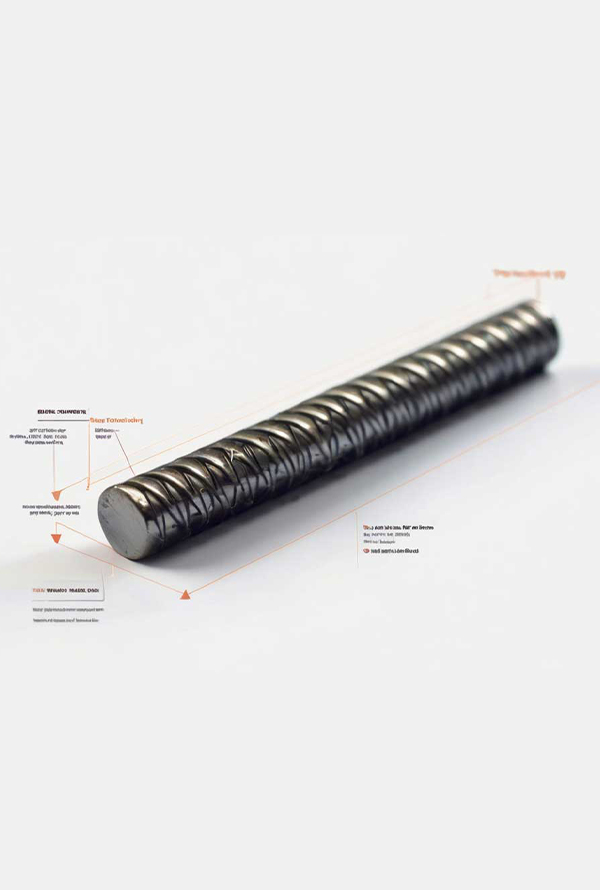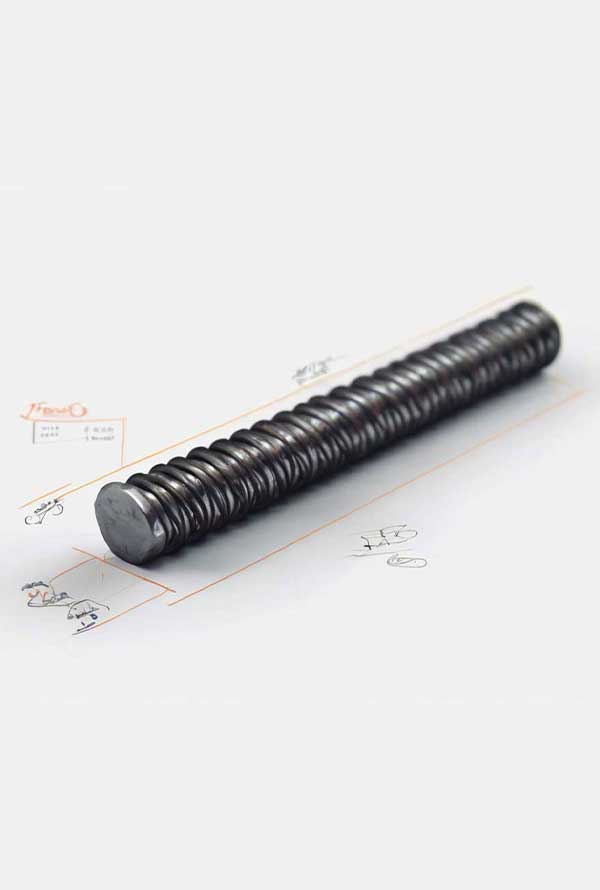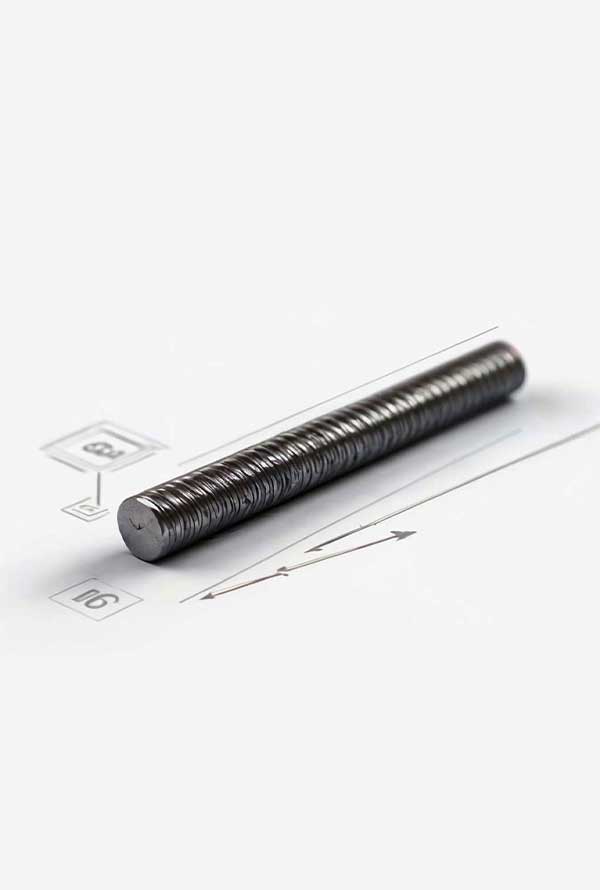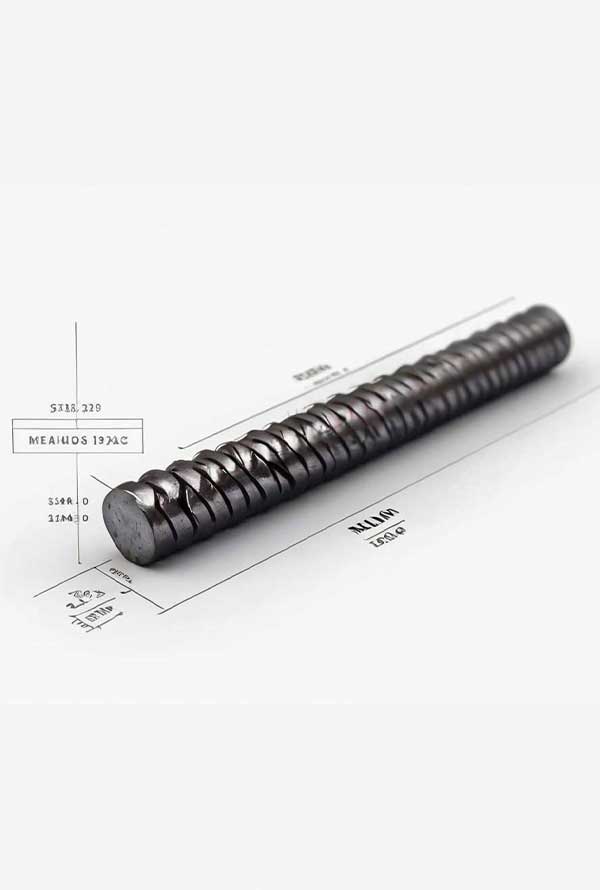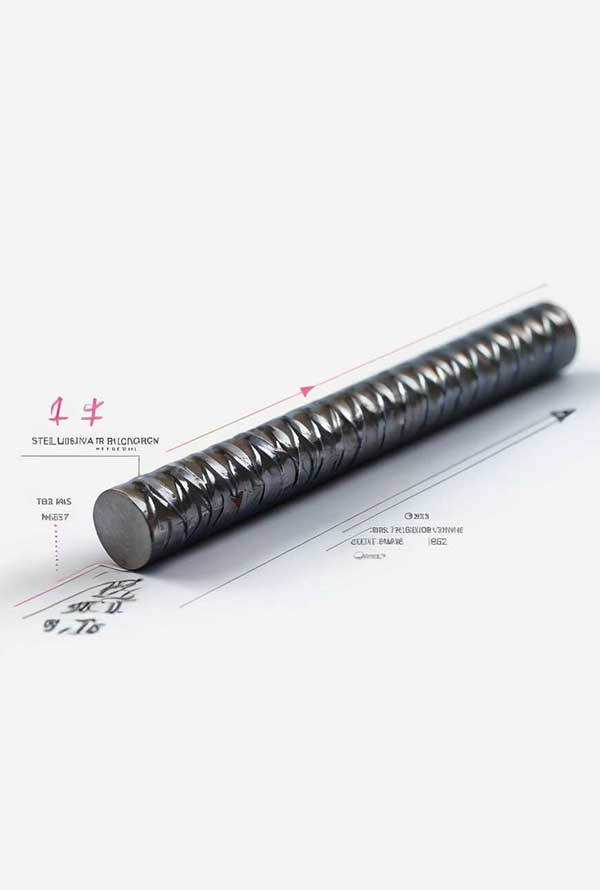Rebar 10 is one of the most commonly used steel sections in the construction industry. Due to its suitable mechanical properties and economic price, it is utilized in the construction of various concrete structures.
Price of Rebar 10
The price of size 10 rebar depends on several factors, including the type of rebar (plain or ribbed), the manufacturing factory (based on the brand and quality of the factory’s products), fluctuations in the steel and raw material markets, and the level of supply and demand in the market. Typically, the price per kilogram of rebar 10 in the Iranian market varies.
Applications of Rebar 10
Rebar 10 is usually used as a secondary rebar in concrete structures. Among its key applications are distributing loads in concrete sections, serving as lateral ties in columns (commonly 4 in square columns and 6 in circular columns), and reinforcing networks to increase the strength of floors and walls.
Concrete Cover for Rebar 10
To protect rebars from corrosion and increase the durability of the structure, rebars must be adequately covered with concrete. The required concrete cover for size 10 rebar is as follows:
- Side rebars: Minimum 30 mm
- Internal rebars: Minimum 25 mm
Reinforcement Networks
To enhance floor strength, reinforcement networks with rebars bent at a 90-degree angle are used. The length of these rebars must be at least 15 times the length of plain rebar and 12 times the length of ribbed rebar. The spacing between the rebars in the network should not exceed 12 times the rebar diameter.
Technical Specifications of Plain Rebar 10
Plain rebar 10 is a commonly used steel section in construction, with unique technical specifications that impact its performance and applications in structures.
Physical and Visual Characteristics
The nominal diameter of plain rebar 10 is 10 mm. This relatively small diameter makes rebar 10 suitable for structures with low load-bearing requirements. The length of plain rebar 10 in the market is available in standard sizes ranging from 2 to 12 meters, with the appropriate length chosen based on project needs.
Factors Influencing Rebar Specifications
In addition to diameter and length, other factors affect the technical specifications of plain rebar 10, including:
- Weight: The weight of each plain rebar 10 section depends on factors like steel density, rebar length, and production standards.
- Alloy Composition: The type and percentage of alloys used in rebar production influence its mechanical properties.
- Production Methods: Different production methods, such as hot rolling and cold rolling, affect the internal structure and properties of the rebar.
Rebar Production Methods and Their Impact on Mechanical Properties
The production method is a key factor in determining the mechanical properties and applications of rebar in various industries, especially construction. Different production methods create varying properties in rebars, affecting their strength, ductility, hardness, and other characteristics. The following outlines common rebar production methods:
Hot Rolling
In the hot rolling method, steel billets are heated in furnaces and passed through steel rollers to form rebar. This method is common, cost-effective, and flexible for shaping rebars, but internal stresses may form in the final product.
Cold Rolling
In cold rolling, steel billets are subjected to roller pressure at temperatures below their recrystallization point. This method results in high yield strength, precise dimensions, and smooth surfaces. However, it offers lower ductility, higher production costs, and is unsuitable for earthquake-prone areas.
Thermex (QST)
In the Thermex (QST) method, rebars undergo rapid cooling after hot rolling to alter their mechanical properties. This method is economical, offers good weldability, but has high hardness and brittleness, making it unsuitable for earthquake-prone areas.
Alloying (Microalloying)
In the alloying (microalloying) method, adding alloying elements to steel enhances the mechanical properties of the rebar. This method provides high strength and good ductility, making it suitable for high-load structures. However, production costs are higher.
Comparative Table of Production Methods
| Production Method | Advantages | Disadvantages | Applications |
|---|---|---|---|
| Hot Rolling | Cost-effective, flexible | Internal stresses | General structures |
| Cold Rolling | High strength, precision | Low ductility | High-precision components |
| Thermex | Economical, weldable | High hardness, brittle | Low-load structures |
| Alloying | High strength, ductile | High production cost | High-load, earthquake zones |
Factors Influencing the Choice of Production Method
The choice of production method depends on various factors, such as the type of project, including structure type, loading, and environmental conditions. Required mechanical properties, such as strength, ductility, and hardness, are also critical. Production costs vary for each method and are considered in the decision-making process. Compliance with national and international standards is also crucial.
Mechanical Properties of Rebar 10
Rebar 10 is widely used in construction due to its suitable mechanical properties, making it ideal for reinforcing concrete structures.
Key Mechanical Properties of Size 10 Rebar
Rebar 10, thanks to its appropriate alloy composition, has excellent tensile and flexural strength. When produced with high quality, its mechanical properties remain uniform along the length of the rebar. Yield stress and ultimate tensile strength, two key parameters indicating resistance to deformation and fracture, depend on the rebar grade.
Standards and Grades of Size 10 Rebar
- Iran National Standard (ISIR 3132): Specifies the technical characteristics and testing methods for steel rebars.
- Grades A2 and A3: Size 10 rebar is typically produced in grades A2 and A3, which differ in yield stress and rib types.
- Russian Standard (GOST 5781): Classifies rebars into four grades (A1 to A4).
Mechanical Specifications Table for Size 10 Rebar
| Grade | Yield Strength (MPa) | Ultimate Tensile Strength (MPa) | Rib Type | Hardness Level |
|---|---|---|---|---|
| A2 | 340 | 500 | Spiral | Semi-hard |
| A3 | 400 | 600 | Chevron | Hard |
Chemical Properties of Size 10 Rebar
In addition to mechanical properties, the chemical composition of rebar affects its performance. The main elements in rebar include carbon, silicon, manganese, phosphorus, sulfur, and nitrogen. The proportion of these elements varies between grades, influencing properties like strength, ductility, and weldability.
Chemical Composition Table for Size 10 Rebar
| Grade | Carbon (%) | Silicon (%) | Manganese (%) | Phosphorus (%) | Sulfur (%) | Nitrogen (%) |
|---|---|---|---|---|---|---|
| A2 | 0.32 | 0.6 | 1.3 | 0.045 | 0.045 | 0 |
| A3 | 0.37 | 0.6 | 1.6 | 0.045 | 0.045 | 0 |
Weight of Rebar 10 and Its Standards
The weight of each 10-size rebar section depends on various factors, including length (commonly 12 meters), manufacturing factory, and national and international production standards. Variations in factory production processes and standards like Stahle lead to slight differences in the exact weight of rebar 10.
Stahle Standard
According to the Stahle standard, the weight of each 12-meter rebar 10 section is approximately 7.404 kg. However, differences in production processes and raw materials may cause slight weight variations in rebars manufactured by Foolad Sirjan Hadid and other factories.
Importance of Accurate Weight Determination
Accurately determining the weight of rebar is essential in engineering calculations and procurement. Rebar weight impacts project costs, concrete consumption, and ultimately the structure’s strength and durability.
Build Strong and Durable Structures with Rebar 10 from Foolad Sirjan Hadid
Sirjan Hadid has made significant strides in improving construction quality in the country by producing high-quality size 10 rebar. By choosing rebar 10 from Foolad Sirjan Hadid, you gain numerous advantages. For more information and to purchase rebar 10, contact us today.
